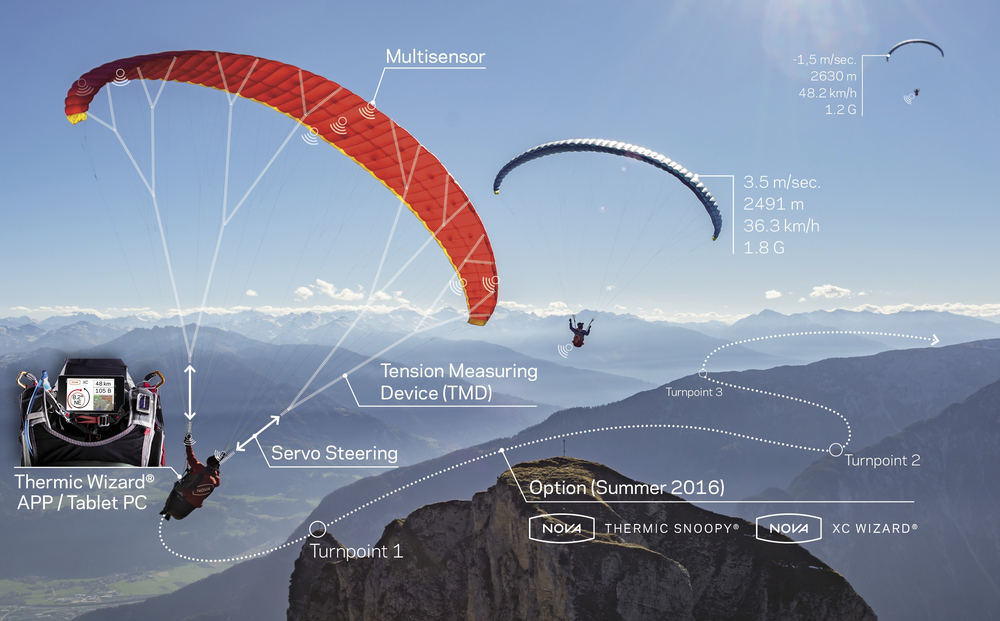Paragliding is an incredible experience, a dance with the wind that offers breathtaking views and a sense of freedom unlike any other. But let’s be honest, it’s not just about pretty scenery. Understanding the weather, especially thermic conditions, is absolutely crucial for a safe and enjoyable flight. Think of thermals as the invisible elevators of the sky, and knowing how to ride them is what separates a good flight from a potentially dangerous one. So, what exactly are these “thermic conditions” we keep hearing about, and how do they impact your paragliding adventure?
Thermic conditions, in the context of paragliding, refer to the atmospheric conditions that create rising columns of warm air, known as thermals. These thermals are the lifeblood of soaring flight, allowing paragliders to gain altitude and stay aloft for extended periods. Without them, well, you’re just gliding down! These conditions are influenced by a variety of factors, including solar radiation, surface features, and wind patterns.
How Solar Radiation Creates Thermals
The sun is the engine that drives thermals. As the sun heats the earth’s surface unevenly, some areas warm up faster than others. These warmer areas then heat the air directly above them. This warm air is less dense than the surrounding cooler air, causing it to rise.
Surface Features and Their Impact on Thermals
Different surfaces absorb and radiate heat differently. For example, a plowed field will heat up much faster than a forest. This difference in heating creates localized areas of warm air, which then rise as thermals. Think of dark, dry surfaces as thermal hotspots!
- Dark, plowed fields
- Rocky outcrops
- Urban areas (especially asphalt)
Tip: Look for areas with contrasting surface types. The edge of a forest next to a field, for example, can be a great place to find thermals.
Identifying and Utilizing Thermals While Paragliding
Knowing what thermals are is one thing, but spotting them and using them effectively is where the real skill comes in. There are several visual cues and techniques that experienced paragliders use to locate and exploit these rising columns of air.
Visual Cues for Spotting Thermals
Keep your eyes peeled! There are several visual indicators that can help you pinpoint thermals. Look for:
- Cumulus clouds: These puffy, white clouds often form at the top of rising thermals.
- Dust devils: Small, rotating columns of dust are a clear sign of rising air.
- Birds soaring in circles: Birds often use thermals to gain altitude effortlessly.
- Changes in wind direction: As you approach a thermal, you may feel a slight change in wind direction.
Techniques for Entering and Coring Thermals
Once you’ve identified a thermal, the next step is to enter it and “core” it – that is, stay within the strongest part of the rising air. This usually involves turning your paraglider in a tight circle within the thermal. Experiment with different bank angles and turn radii to find the sweet spot where you’re gaining altitude most efficiently.
Interesting Fact: Some experienced pilots use variometers (instruments that measure vertical speed) to help them locate and core thermals more effectively. The variometer will beep louder as you enter stronger lift.
The Dangers of Strong Thermic Conditions in Paragliding
While thermals are essential for soaring, strong thermic conditions can also pose significant risks to paragliders. Understanding these dangers and how to mitigate them is crucial for safe flying.
Turbulence and Strong Lift
Strong thermals can create turbulent conditions, which can be unsettling and even dangerous. Sudden changes in wind speed and direction can cause your paraglider to collapse or become difficult to control. Be prepared for these conditions and know how to react quickly and effectively.
Cloud Suck and Overdevelopment
In very strong thermic conditions, cumulus clouds can rapidly develop into cumulonimbus clouds (thunderstorm clouds). These clouds can generate powerful updrafts that can suck paragliders into them, leading to dangerous situations. Avoid flying near developing cumulonimbus clouds at all costs!
Mitigating Risks in Strong Thermic Conditions
So, how do you stay safe when the thermals are strong? Here are a few key strategies:
- Fly early or late in the day: Thermic activity is usually strongest during the middle of the day.
- Choose your flying site carefully: Some sites are more prone to strong thermals than others.
- Be aware of the weather forecast: Pay close attention to forecasts for thermal activity and cloud development.
- Know your limits: Don’t fly in conditions that are beyond your skill level.
Frequently Asked Questions About Thermic Conditions and Paragliding
What is a thermal inversion?
A thermal inversion is a layer of warm air aloft that traps cooler air near the surface. This can suppress thermal activity, making it difficult to find lift.
How does wind affect thermals?
Wind can drift thermals downwind, making them harder to locate. It can also create shear zones, where the wind changes direction or speed with altitude, leading to turbulence.
What is the best time of day to paraglide for beginners?
Generally, early morning or late afternoon offer milder thermic conditions, making them ideal for beginner paragliders.
Understanding thermic conditions is an ongoing learning process for any paraglider pilot. It requires observation, experience, and a healthy respect for the power of nature. So, keep learning, keep practicing, and always prioritize safety. Remember, the sky is vast, but knowledge and caution are your best wings. Fly safe, and enjoy the incredible experience of soaring with the thermals! Happy flying!






